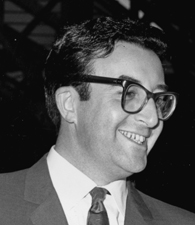The shape-shifting aspects of Peter Sellers made him one of the most versatile actors around—his many faces, voices and impressions lending themselves to characters such as Inspector Clouseau and Dr. Strangelove. His comic genius coupled with his ability to completely immerse himself in the characters he portrayed made him beloved of audiences. Though his personal life was plagued by inner demons, he arguably shaped the nuances of British comedy we know today.
Peter Sellers’ Early Days
Richard Henry Sellers was born on September 8, 1925, in Southsea, Hampshire, England, to vaudeville entertainers “Peg” and Bill Sellers. His nickname, “Peter,” came from the name of a stillborn older brother.
According to the Official Site of Peter Sellers, his parents were eager to put him on stage, so on only the second day of his life (Time magazine puts this date at two weeks), Sellers made his stage debut at London’s King’s Theater, launching his career as a performer.
As a teenager, Sellers learned to play the drums, banjo and ukulele. Drafted into the British Royal Air Force during World War II, Sellers joined the entertainment crew and performed comedy sketches impersonating senior officers.
Sources in this Story
- The Official Site of Peter Sellers: Biography
- British Film Institute: Screenonline: Peter Sellers Biography
- Time: That Old Feeling: Who Was Peter Sellers
- Busted Halo: Roles of a Lifetime
- BBC Two: The Life and Death of Peter Sellers
Sellers’ Comedy and Acting
Sellers established his skill as a “master impressionist” on the BBC’s long running show, “Crazy People,” also known as “The Goon Show.” He strutted his zany improvisational skills in a variety of skits featuring his characters Major Bloodnok, Bluebottle, Henry Crun and others.
Film roles followed, and his complex comedic character in “I’m All Right Jack,” seemed to cement his recognition as a comic genius. Sellers’ career as an actor reached the United with “The Mouse That Roared,” and then co-starring with Sophia Loren in “The Millionaires.” He continued to amass an extensive list of movie roles, including a scene-stealing turn as Clare Quilty in the controversial adaptation of Vladimir Nabokov’s novel “Lolita.”
The multi-faceted Sellers was known for impressions of all kinds—during an interview for his movie “Dr. Strangelove,” he dazzles listeners with a seamless delivery of a panoply of American and British accents.
“Dr. Strangelove” and the “Pink Panther” series, with Sellers playing the ineffable Inspector Clouseau to comic perfection, bought the actor international renown and lasting fame. But after a near death experience, Sellers gave what many consider to be the greatest performance of his career as Chance, a simple gardener, in the screen adaptation of the Jerzy Kosinki novel “Being There.” Sellers spent many years attempting to bring this story to the screen, which eventually won him a Golden Globe Award, along with an Academy Award nomination as Best Actor.
The Rest of the Story
One biographer speculated that Sellers’ “comedy and bizarre personal life were expressions of a borderline insanity.” His several marriages to Anne Howe, Britt Ekland, Miranda Quarry all ended in divorce. His ability to entirely immerse himself in a character may have caused him to lose touch with—or never develop—who he was; Time’s Richard Corliss called him, “The man with a genius for everything but making himself and those around him happy.”
Sellers, who suffered a near-fatal heart attack at age 38, died from a second heart attack on July 24, 1980, at the young age of 54. His wife at the time of his death, Lynne Fredrick, and his friends, had Glenn Miller’s song “In The Mood” played at his funeral as a comic tribute, since he despised the tune. Sellers had told his son that the song was “wonderfully inappropriate—hence, wonderfully appropriate—for solemn occasions.”
In 2004, Peter Sellers’s demented real-life persona came alive as portrayed by Geoffrey Rush in the semi biographical film, “The Life and Death of Peter Sellers,” revealing the issues that plagued him. Sellers once admitted, “I’m a classic example of all humorists—only funny when I’m working.”











